标签:pom.xml 支持 本地 ros 团队 over 版本 超级 nal
最近工作中正在推广jacoco的增量覆盖率的统计,想学习一波,纯粹采坑中,适合小白学习jacoco。调研了一下市面上使用的增量覆盖率的工具,发现大多数公司都在使用jacoco,那么jacoco到底相比其他工具的优点表现在哪些方面呢?
市场上主要的代码覆盖率工具:
比较:(wuli图片是我上百度copy下来的),总结一下jacoco的优势
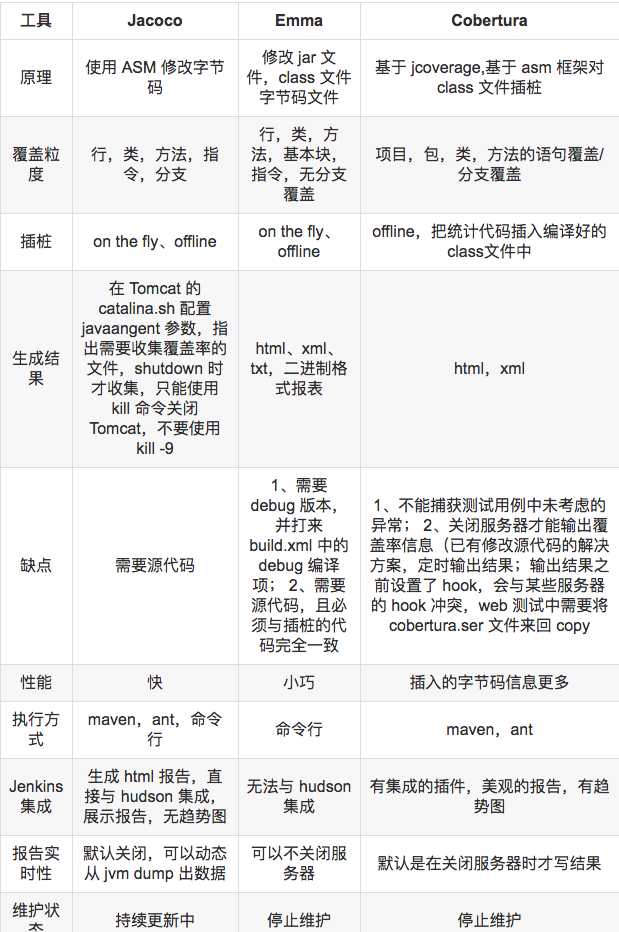
接下来就进入正题了,我们可以现在本地的Maven工程中插入jacoco插件学习一下,只需要3步,跟我一起学习吧
1.pom.xml文件中插入jacoco的插件及版本
<?xml version="1.0" encoding="UTF-8"?>
<project xmlns="http://maven.apache.org/POM/4.0.0"
xmlns:xsi="http://www.w3.org/2001/XMLSchema-instance"
xsi:schemaLocation="http://maven.apache.org/POM/4.0.0 http://maven.apache.org/xsd/maven-4.0.0.xsd">
<modelVersion>4.0.0</modelVersion>
<groupId>jacoco</groupId>
<artifactId>jacoco</artifactId>
<version>1.0-SNAPSHOT</version>
<name>JaCoCo Examples</name>
<properties>
<project.build.sourceEncoding>UTF-8</project.build.sourceEncoding>
<project.reporting.outputEncoding>UTF-8</project.reporting.outputEncoding>
<!-- Sonar -->
<sonar.java.coveragePlugin>jacoco</sonar.java.coveragePlugin>
<sonar.dynamicAnalysis>reuseReports</sonar.dynamicAnalysis>
<!-- The destination file for the code coverage report has to be set to the same value
in the parent pom and in each module pom. Then JaCoCo will add up information in
the same report, so that, it will give the cross-module code coverage. -->
<sonar.jacoco.itReportPath>${project.basedir}/target/jacoco.exec</sonar.jacoco.itReportPath>
<sonar.language>java</sonar.language>
</properties>
<dependencies>
<!--
<dependency>
<groupId>junit</groupId>
<artifactId>junit</artifactId>
<version>4.8.1</version>
<scope>test</scope>
</dependency>
-->
<dependency>
<groupId>junit</groupId>
<artifactId>junit</artifactId>
<version>4.11</version>
<scope>test</scope>
</dependency>
</dependencies>
<build>
<pluginManagement>
<plugins>
<plugin>
<groupId>org.jacoco</groupId>
<artifactId>jacoco-maven-plugin</artifactId>
<version>0.8.2</version>
</plugin>
</plugins>
</pluginManagement>
<plugins>
<plugin>
<groupId>org.jacoco</groupId>
<artifactId>jacoco-maven-plugin</artifactId>
<!--<configuration>-->
<!--<includes>com.*</includes>-->
<!--</configuration>-->
<executions>
<execution>
<id>pre-test</id>
<goals>
<goal>prepare-agent</goal>
</goals>
</execution>
<execution>
<id>post-test</id>
<phase>test</phase>
<goals>
<goal>report</goal>
</goals>
</execution>
</executions>
</plugin>
<plugin>
<groupId>org.apache.maven.plugins</groupId>
<artifactId>maven-compiler-plugin</artifactId>
<configuration>
<source>1.5</source>
<target>1.5</target>
</configuration>
</plugin>
</plugins>
</build>
2.写一个Java方法及它的测试方法(这个测试方法就是用来测试你写的方法的并且计算你的全量覆盖率的),我写了个超级超级简单的HelloWorld方法
public class HelloWorld {
public HelloWorld(){}
public String Method1(){
return "Hello World";
}
public int Method2(int a,int b){
return a+b;
}}
public class HelloWorldTest {
@Test
public void testMethod1(){
HelloWorld helloWorld=new HelloWorld();
String string=helloWorld.Method1();
Assert.assertNotNull(string);
}}
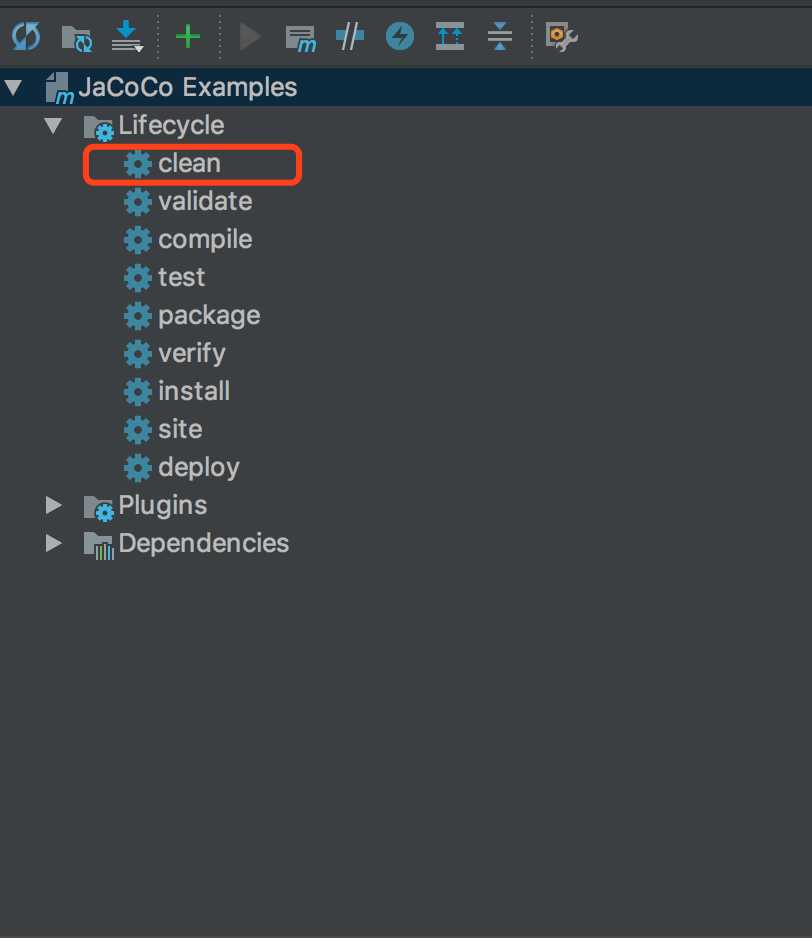
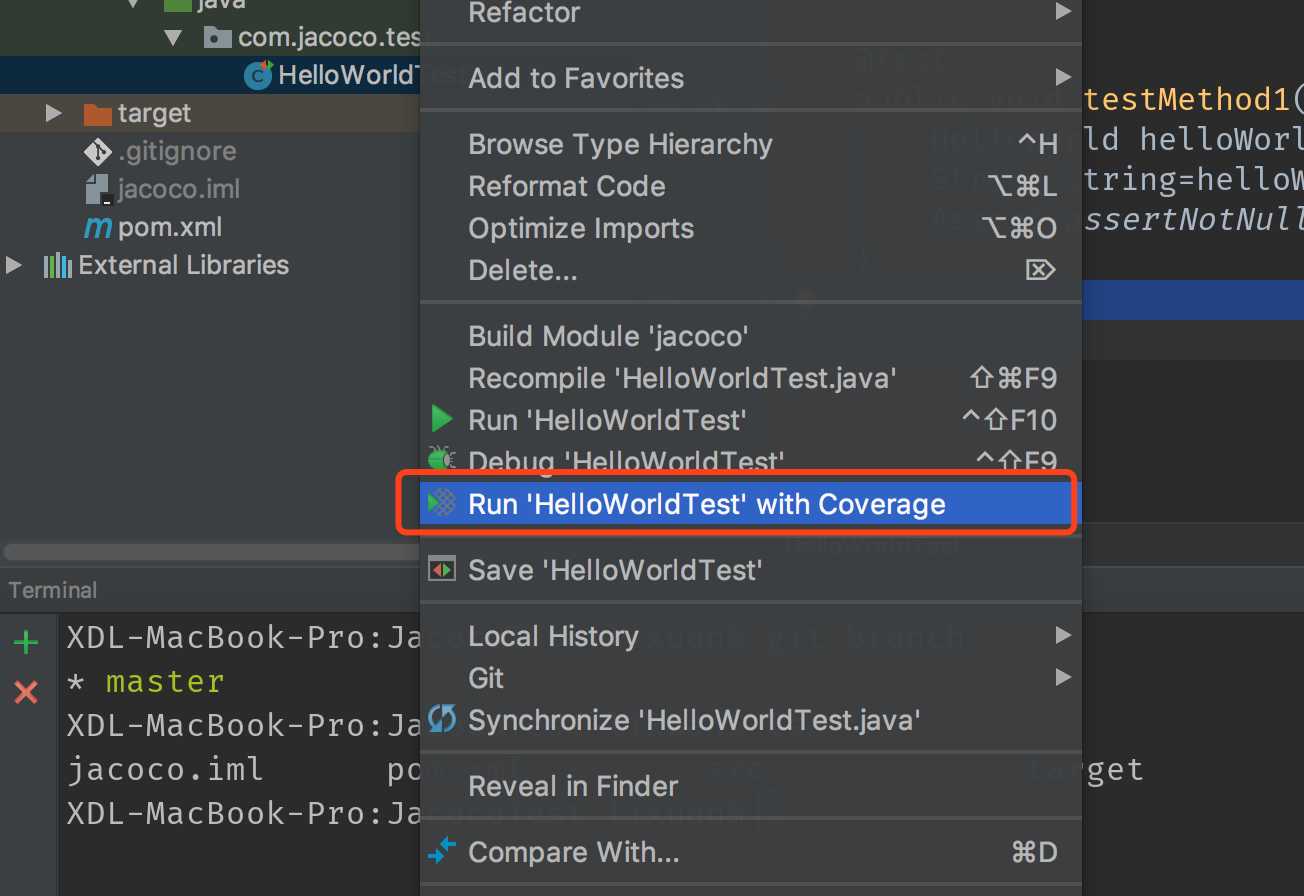
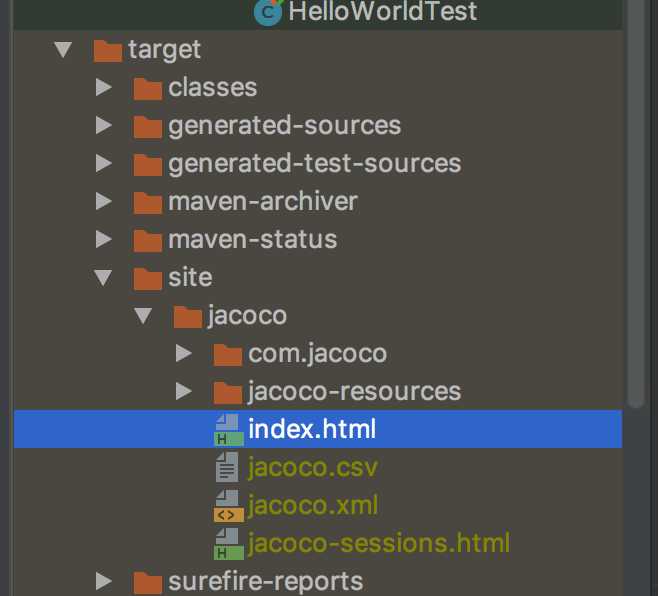
4.进入文件夹中找到index.html,打开就可以查看全量测报告了

以上就是本地玩转jacoco的教程,因为Jenkins提供了对jacoco的集成,所以接下来是Jenkins+jacoco
1.首先有一台服务器并且配置好了Jenkins,需要将代码上传到git上,我的Jenkins之前就配置好了github,所以我把代码上传到github上
2.Jenkins上配置

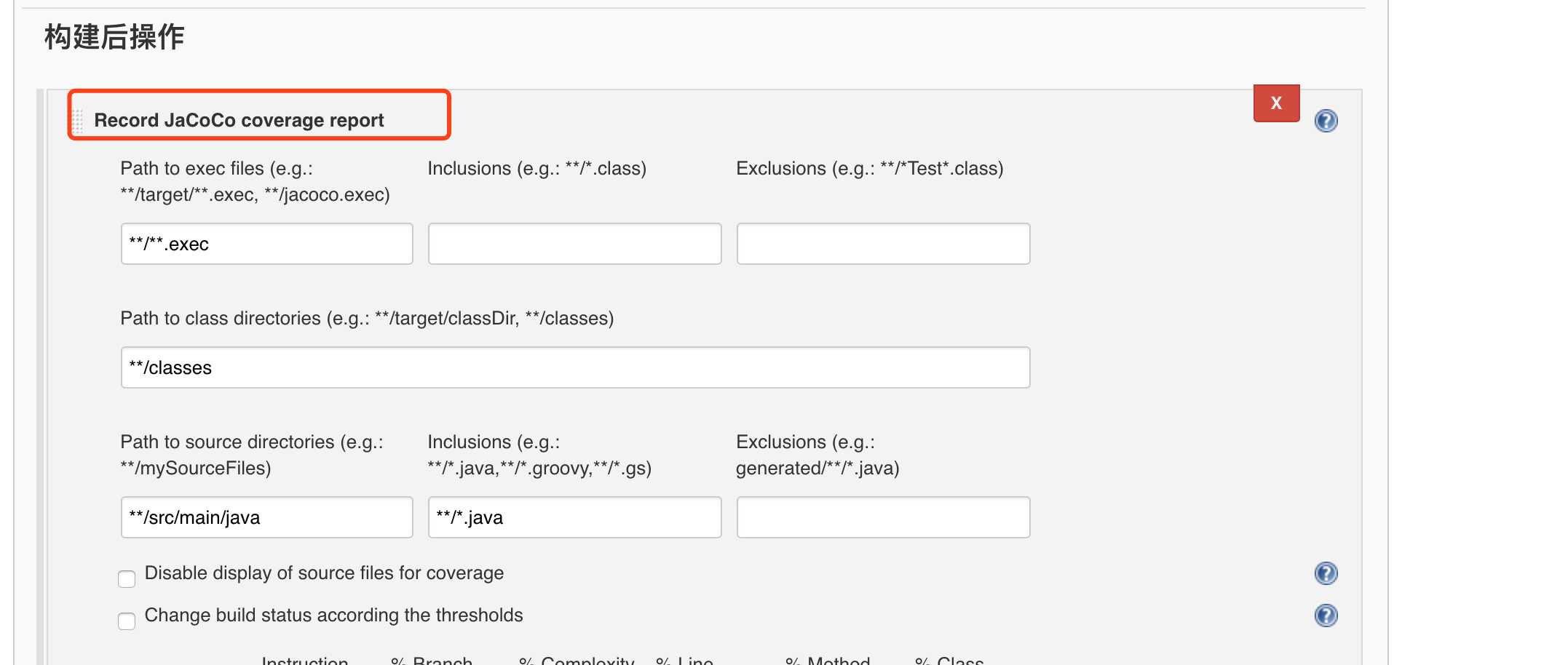
3.重新构建工程,可以看到如下的效果。
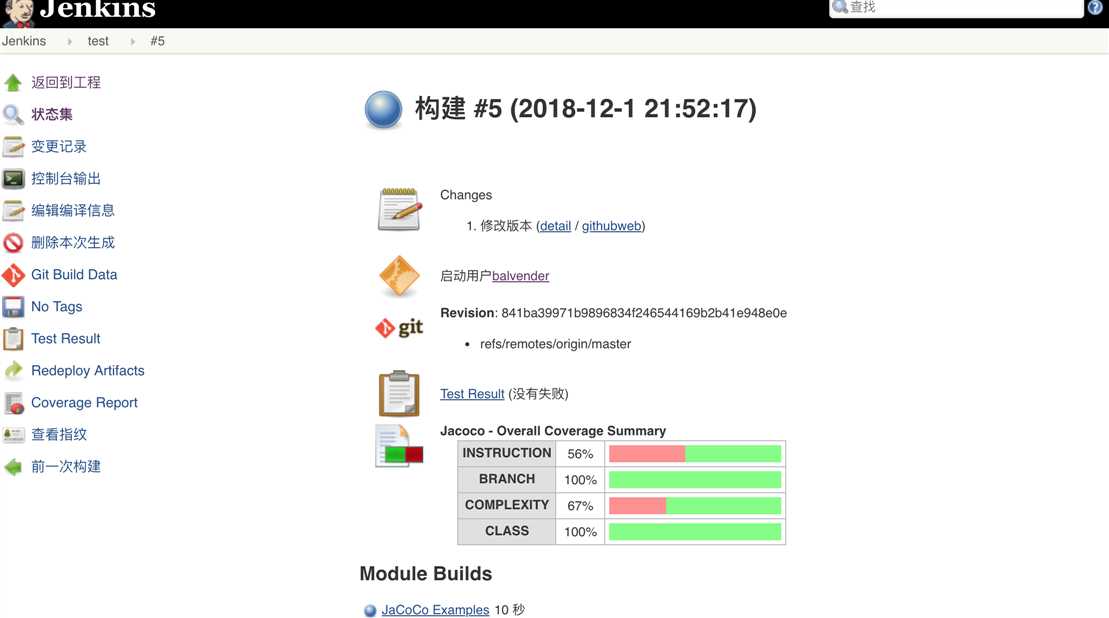
标签:pom.xml 支持 本地 ros 团队 over 版本 超级 nal
原文地址:https://www.cnblogs.com/lixuan1998/p/10679141.html